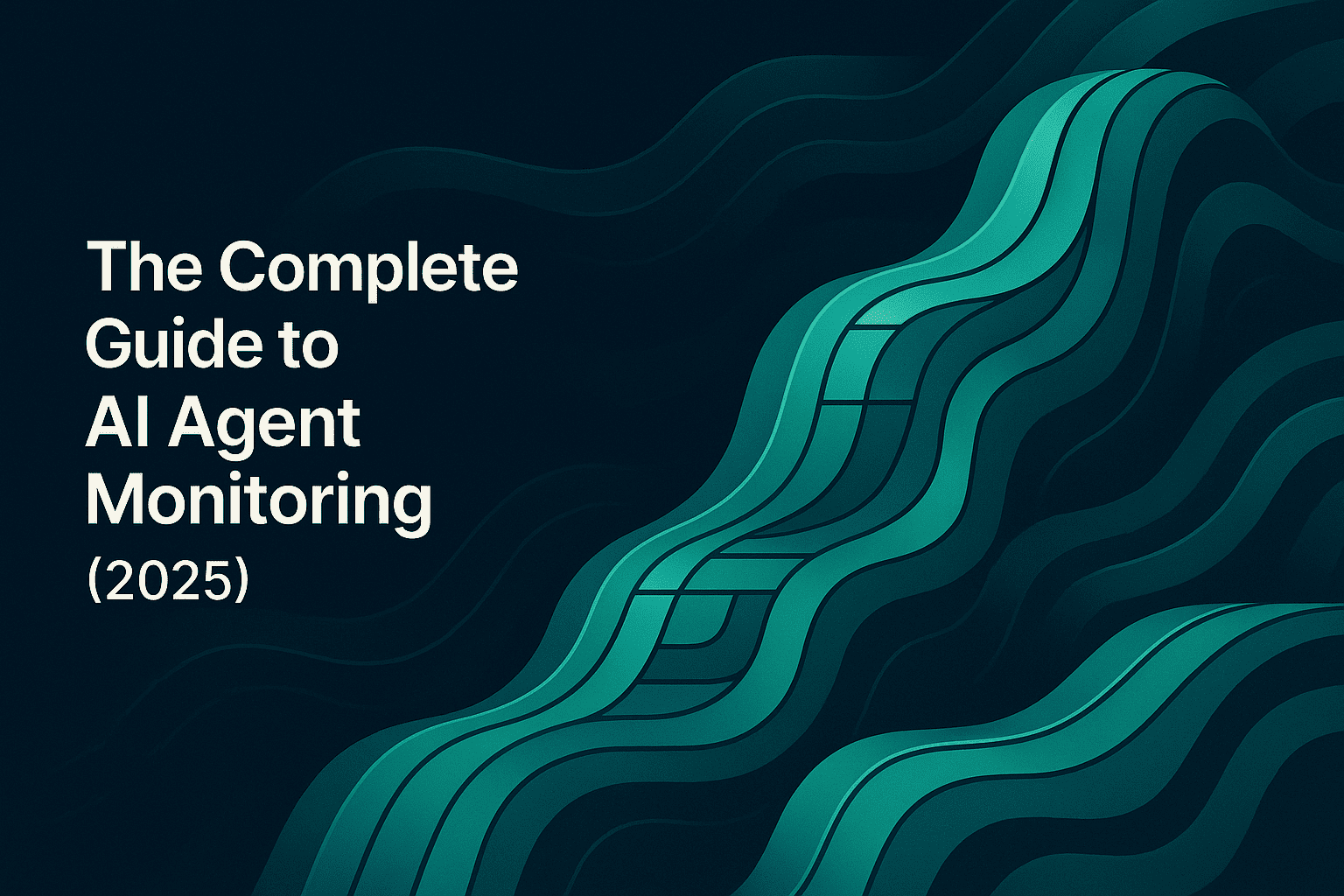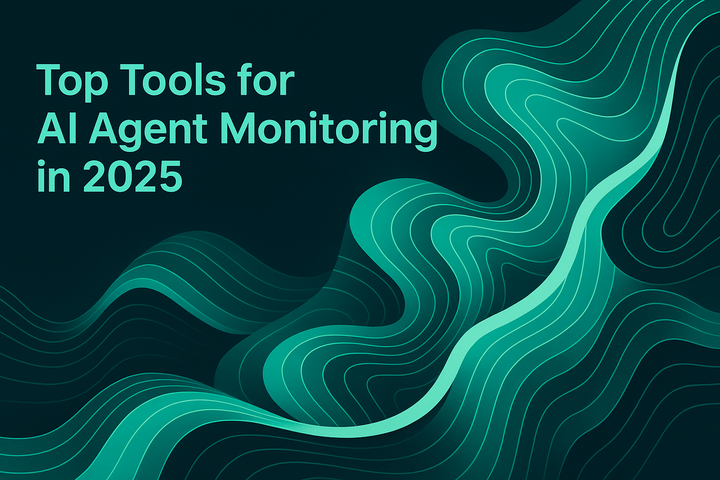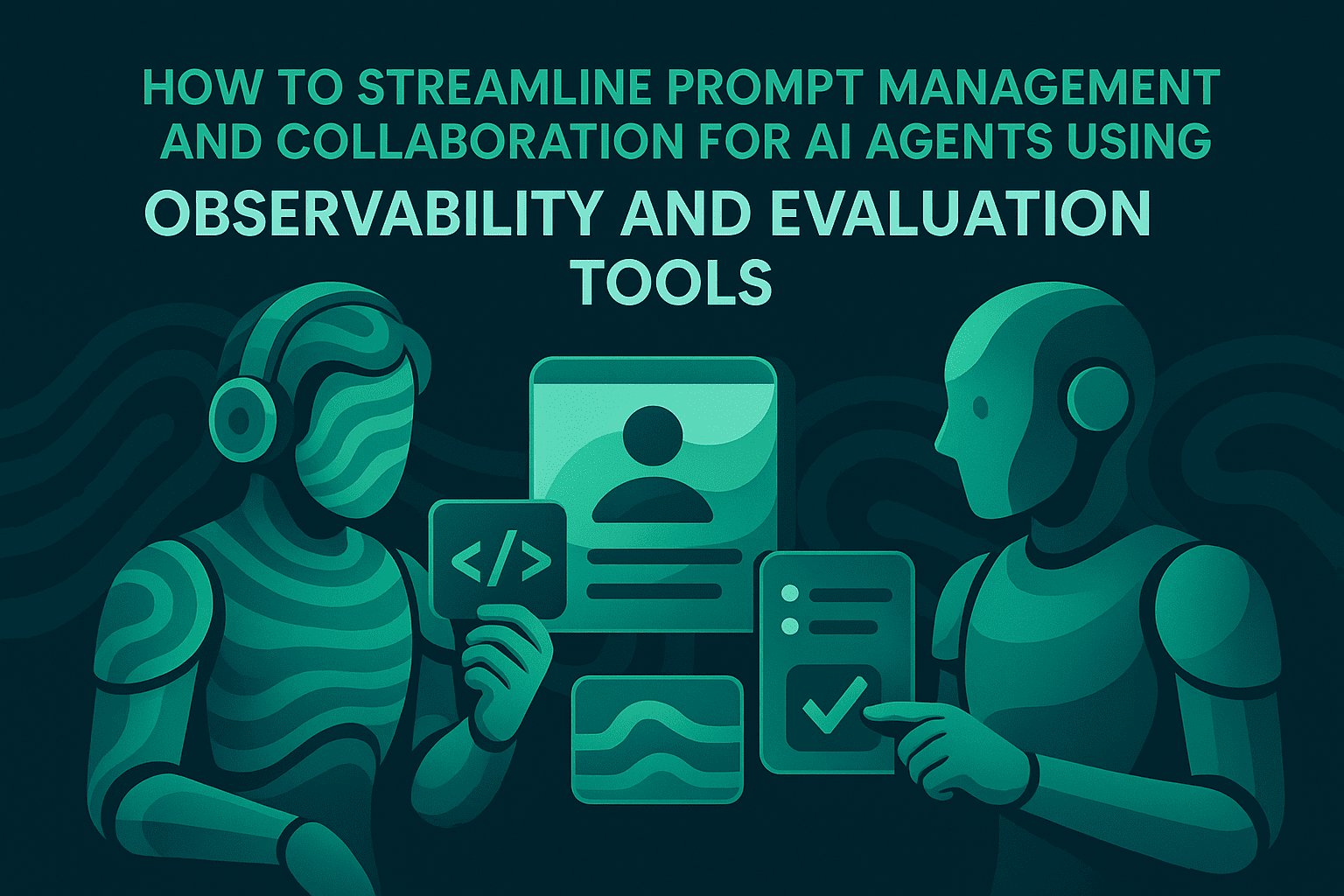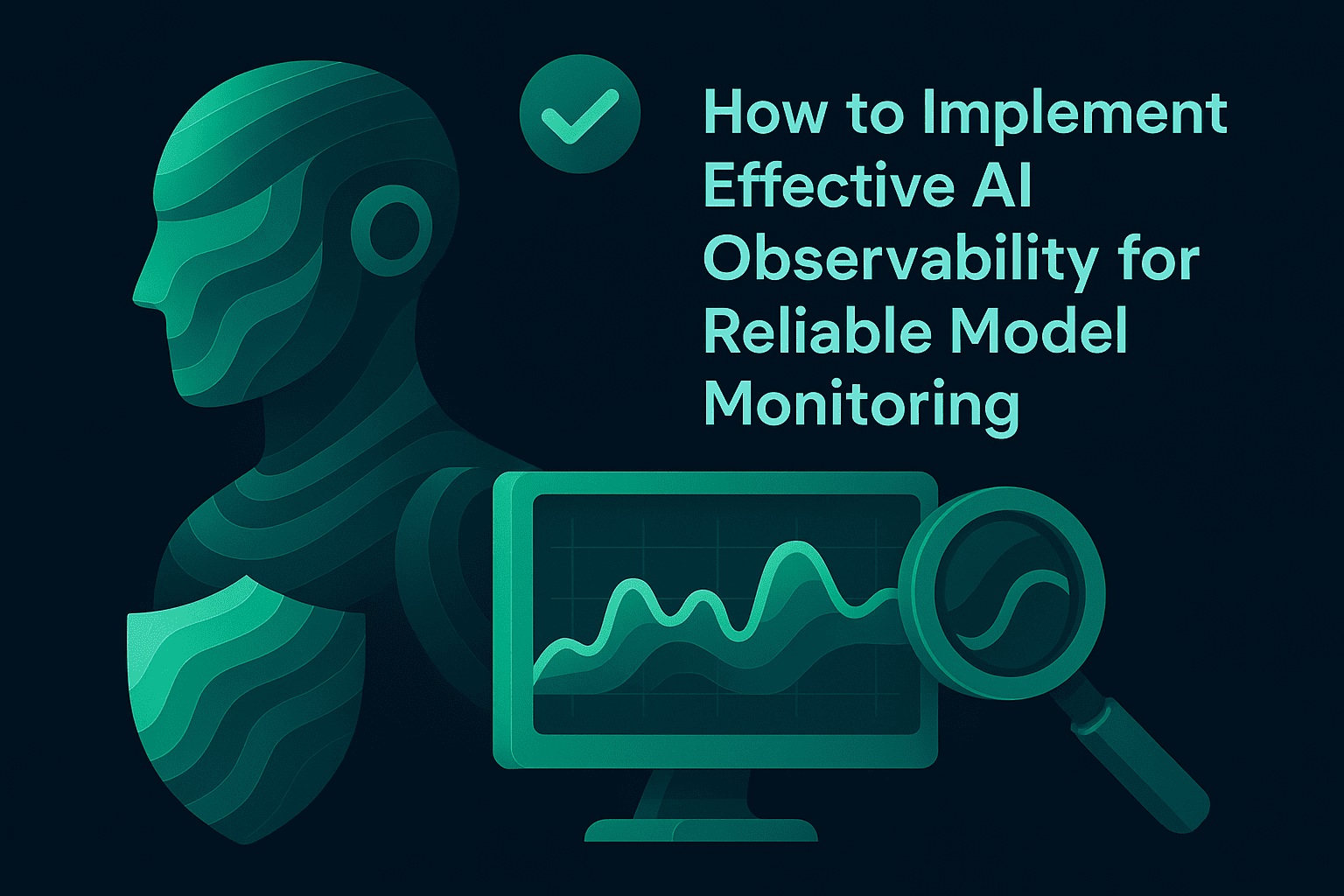The Complete Guide to AI Agent Monitoring (2025)

TL;DR
AI agent monitoring gives you end-to-end visibility into prompts, parameters, tool calls, retrievals, outputs, cost, and latency. It enables faster diagnosis, better explainability, and continuous quality control.
A production-grade setup combines distributed tracing, structured payload logging, automated and human evaluations, real-time alerts, dashboards, and OpenTelemetry-compatible integrations. Explore implementation guidance in the Maxim Docs and evaluation design in LLM-as-a-Judge in Agentic Applications.
Introduction
AI agents now power everything from copilots and chatbots to retrieval-augmented generation (RAG) systems and voice assistants. To keep these systems reliable, safe, and cost-effective, teams need disciplined monitoring and observability.
AI agent monitoring tracks traces, payloads, evaluators, and drift signals across multi-step workflows, aligning complex, non-deterministic systems with measurable quality, safety, and cost objectives. This guide explains what to monitor, how to instrument it, and how to scale operations with references to Maxim AI’s documentation and product capabilities.
Why Monitoring AI Agents Matters
Modern agentic systems combine LLMs with retrieval pipelines, tools, and orchestrators. A single session can involve nested model calls, external APIs, and long-running reasoning chains that shift dynamically based on context.
Traditional application monitoring can measure latency and errors, but cannot explain why an agent produced a specific response or failed a task. Purpose-built observability captures prompts, decisions, and evaluator signals, allowing teams to enforce safety, manage costs, and improve performance.
Monitoring is no longer optional -it is essential for reliability, compliance, and continuous learning.
What Is AI Agent Monitoring and Observability
AI monitoring continuously collects and analyzes telemetry from every component of an agent’s lifecycle: sessions, traces, spans, generations, retrievals, tool calls, events, and errors. Observability adds depth by preserving payloads and context so teams can tie outputs back to specific prompts and parameters.
Maxim AI operationalizes this through distributed tracing, evaluator pipelines, alerting, dashboards, and simulation workflows designed for agentic applications.
Core Pillars of Agent Monitoring
Tracing
Full session and span visibility across LLM calls, tools, and retrievals helps teams replay workflows and locate root causes. See setup guidance in the Maxim Docs.
Metrics
Track latency, token usage, throughput, cost, and tool success rates at the session and span level. Metrics enable governance and ensure system performance aligns with business goals.
Payloads
Structured logging of prompts, parameters, completions, and tool I/O enables explainability and compliance audits. Learn more in the Maxim observability integration guide.
Evaluations
Automated evaluators and LLM-as-a-Judge frameworks detect hallucinations, policy violations, and drift. For methodology and design patterns, refer to LLM-as-a-Judge in Agentic Applications.
Alerts
Real-time notifications on latency spikes, cost anomalies, evaluator score drops, or tool errors help mitigate issues before they impact users. See alerting workflows in the Maxim Docs.
Tracing and Logging
Tracing is the foundation of AI observability. Instrument your SDKs to create sessions and spans that record model versions, parameters, prompt templates, tool calls, and retrievals. Capture multimodal data, like voice or vision artifacts, for complete visibility across agent interactions.
Metrics and Analytics
Monitoring turns raw telemetry into actionable insights:
- Latency: End-to-end and per-step latency with P50/P95 targets for agent responsiveness.
- Cost: Per-trace token usage and spend, aggregated trends, and attribution by model, prompt, or tool for governance.
- Throughput and errors: Request volume, concurrency, timeout rates, API failures, and cache hit ratio.
- Tool success and RAG quality: Tool success rates and retrieval quality indicators to diagnose grounding issues.
Dashboards visualize these metrics across repositories and time windows. Saved views enable repeatable investigations by model version, prompt variant, or agent workflow. See dashboard and alerting references in the documentation. Maxim Docs
Payload and Context Tracking
Payload-level logging improves explainability:
- Prompts and parameters: Record prompt templates, variables, temperature, top-p, and system instructions for reproducibility.
- Retrieved context: Persist retrieval queries, ranked chunks, and metadata for grounding audits.
- Tool inputs and outputs: Capture inputs, responses, and status to analyze failures.
Paired with evaluators, payloads help quantify faithfulness, relevance, completeness, and safety. For guidance on linking payloads to evaluators, consult the evaluation workflows in the documentation. Maxim Docs
Evaluations and Human Review
Production agents need continuous quality checks to maintain reliability and trust. Automated evaluators measure faithfulness, coherence, and safety in real time, while LLM-as-a-Judge provides scalable semantic scoring for complex tasks.
Human review complements automation by handling edge cases, domain-specific content, and regulatory contexts that require subjective interpretation. Together, automated evaluators and human reviewers create a closed feedback loop that strengthens agent performance and accountability.
Explore evaluator setup, calibration, and workflow examples in LLM-as-a-Judge in Agentic Applications
Alerting and Drift Detection
Set alerts on:
- Quality regressions: Evaluator scores below thresholds for faithfulness or safety.
- Cost anomalies: Sudden spend spikes or token usage drift across sessions.
- Latency and reliability: Rising tail latencies, timeout rates, and tool failure clusters.
- Prompt injection signals: Detected jailbreak attempts or policy violations.
Alerts should route to Slack, PagerDuty, or webhooks for immediate response and mitigation. For monitoring prompt injection and jailbreak vectors, see the dedicated analysis and mitigation guidelines. Maxim AI
Key Metrics to Monitor
| Category | Metric | Why It Matters | Example |
|---|---|---|---|
| Latency | P50 / P95 latency | Detect slow or blocked steps early | Identify bottlenecks in retrieval |
| Cost | Tokens per session | Prevent inefficiency and overspend | Compare pre- and post-prompt optimization |
| Quality | Faithfulness, relevance | Measure correctness and user trust | Track evaluator trends over time |
| Safety | Policy compliance, PII | Ensure reliability and governance | Detect unsafe outputs automatically |
| Tool Success | API success rate | Debug orchestration failures | Spot fragile tools or configurations |
Set clear SLOs such as P95 latency < 2s or faithfulness > 0.8, and connect alerts to evaluator performance metrics.
Architecture and Scaling
A production-grade architecture includes:
- SDK instrumentation: Log sessions, spans, generations, and tool calls.
- OTLP ingestion: Stream traces into Maxim or existing observability backends.
- Evaluator services: Configure automatic quality checks and review pipelines.
- Dashboards and alerts: Provide shared visibility for engineering and product teams.
Implementation guidance is available in the OpenTelemetry ingestion docs.
Debugging and Reliability Engineering
When incidents occur:
- Trace replay: Follow the hierarchical timeline to locate where reasoning deviated or tools failed.
- Root cause analysis: Inspect prompts, parameters, retrieved chunks, and tool responses for semantic mismatch or context gaps.
- Immediate mitigations: Contain the issue by reverting to a prior prompt or model configuration, applying stricter input validation, and isolating the failing span for detailed analysis before releasing a fix.
- Postmortems: Curate failed cases into datasets and re-run evaluators to validate improvements.
For adversarial behavior and containment approaches, use the security guidance on jailbreaks and injection patterns. Maxim AI For evaluator-centric workflows, see LLM-as-a-judge guidance. LLM-as-a-Judge in Agentic Applications.
Comparative Landscape
Teams often consider point solutions for model observability, prompt management, or logging, but agent monitoring demands a unified stack that covers tracing, payloads, evaluators, alerts, and data curation for multi-agent, multimodal systems. Tools like Langfuse and TruLens focus on specific aspects of observability. Maxim AI differentiates itself by unifying tracing, evaluation, and simulation within a single workflow, enabling teams to monitor and improve AI agents seamlessly.
Explore platform capabilities in the Maxim Docs.
How Maxim AI Helps
Maxim AI is an end-to-end platform for AI monitoring, LLM observability, agent evaluation, and simulation:
- Distributed tracing: Instrument JS, Python, Go, and Java applications to log sessions, traces, spans, generations, retrievals, and tool calls with structured APIs.
- Real-time alerts and dashboards: Monitor latency, cost, token usage, and evaluator signals; configure saved views for rapid operational workflows.
- Evaluations: Combine automated evaluators and LLM-as-a-judge with human review for nuanced assessments.
- Simulation: Test agents across scenarios and personas; analyze trajectories, reproduce issues, and improve agent performance.
Conclusion
AI agent monitoring transforms opaque, unpredictable systems into measurable, reliable workflows. With distributed tracing, evaluation pipelines, and real-time alerts, teams can ship agents that are trustworthy and explainable.
Start for free or book a demo to see how Maxim AI unifies observability and evaluation for production-grade AI agents.


